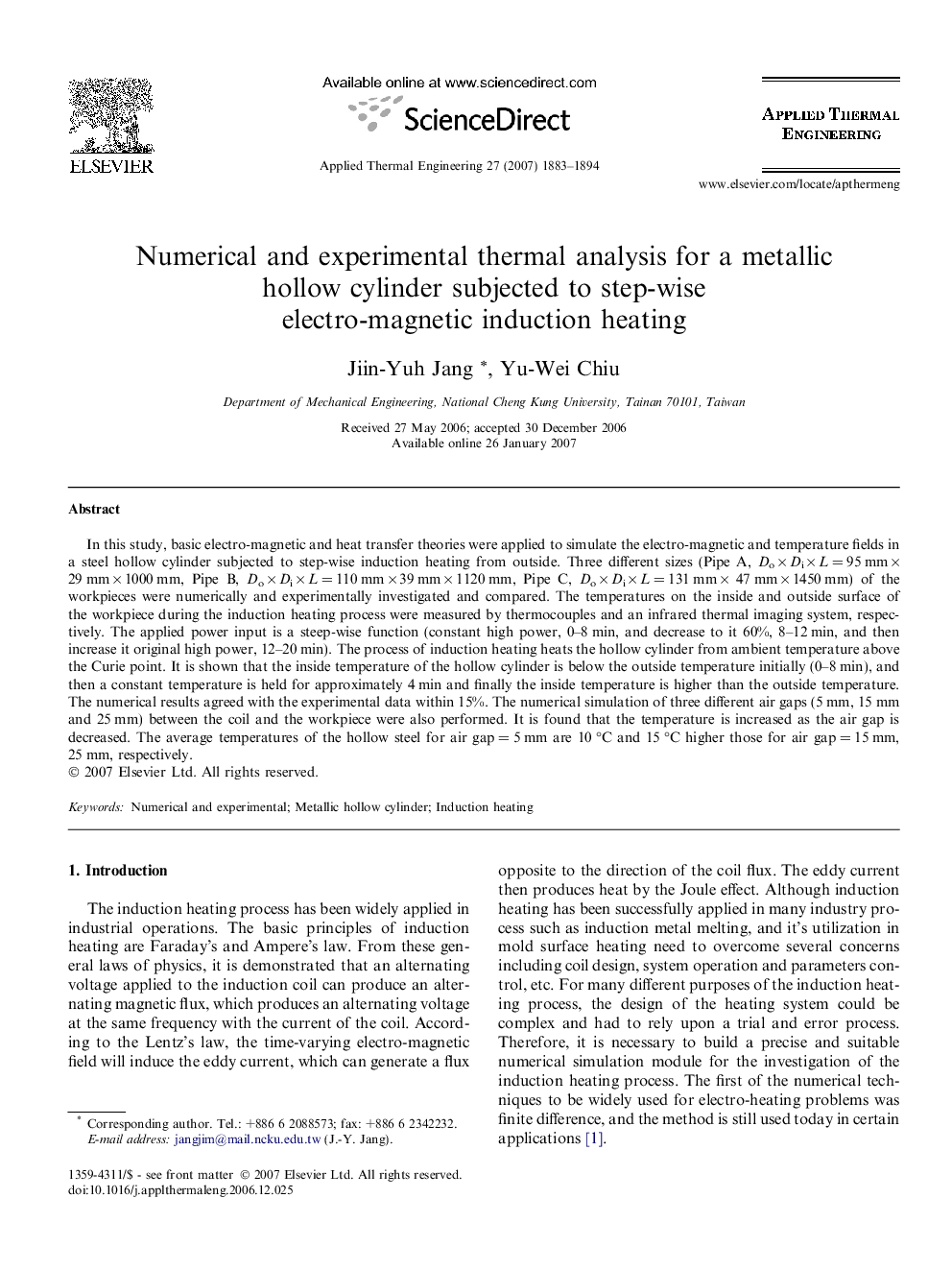| کد مقاله | کد نشریه | سال انتشار | مقاله انگلیسی | نسخه تمام متن |
|---|---|---|---|---|
| 649020 | 1457212 | 2007 | 12 صفحه PDF | دانلود رایگان |
عنوان انگلیسی مقاله ISI
Numerical and experimental thermal analysis for a metallic hollow cylinder subjected to step-wise electro-magnetic induction heating
دانلود مقاله + سفارش ترجمه
دانلود مقاله ISI انگلیسی
رایگان برای ایرانیان
کلمات کلیدی
موضوعات مرتبط
مهندسی و علوم پایه
مهندسی شیمی
جریان سیال و فرایندهای انتقال
پیش نمایش صفحه اول مقاله

چکیده انگلیسی
In this study, basic electro-magnetic and heat transfer theories were applied to simulate the electro-magnetic and temperature fields in a steel hollow cylinder subjected to step-wise induction heating from outside. Three different sizes (Pipe A, Do Ã Di Ã L = 95 mm Ã 29 mm Ã 1000 mm, Pipe B, Do Ã Di Ã L = 110 mm Ã 39 mm Ã 1120 mm, Pipe C, Do Ã Di Ã L = 131 mm Ã 47 mm Ã 1450 mm) of the workpieces were numerically and experimentally investigated and compared. The temperatures on the inside and outside surface of the workpiece during the induction heating process were measured by thermocouples and an infrared thermal imaging system, respectively. The applied power input is a steep-wise function (constant high power, 0-8 min, and decrease to it 60%, 8-12 min, and then increase it original high power, 12-20 min). The process of induction heating heats the hollow cylinder from ambient temperature above the Curie point. It is shown that the inside temperature of the hollow cylinder is below the outside temperature initially (0-8 min), and then a constant temperature is held for approximately 4 min and finally the inside temperature is higher than the outside temperature. The numerical results agreed with the experimental data within 15%. The numerical simulation of three different air gaps (5 mm, 15 mm and 25 mm) between the coil and the workpiece were also performed. It is found that the temperature is increased as the air gap is decreased. The average temperatures of the hollow steel for air gap = 5 mm are 10 °C and 15 °C higher those for air gap = 15 mm, 25 mm, respectively.
ناشر
Database: Elsevier - ScienceDirect (ساینس دایرکت)
Journal: Applied Thermal Engineering - Volume 27, Issues 11â12, August 2007, Pages 1883-1894
Journal: Applied Thermal Engineering - Volume 27, Issues 11â12, August 2007, Pages 1883-1894
نویسندگان
Jiin-Yuh Jang, Yu-Wei Chiu,